Brescia, what to see: 10 places with art
If you do not know Brescia, you will be amazed: it is not only factories and crafts in the heart of Lombardy, the economic locomotive of Europe. It is also so much to discover in terms of history, art, architecture. It has been chosen together with Bergamo as the Italian Capital of Culture 2023: it is a city that offers so much to see, here we are outside the mainstream tourist flow, yet in Brescia everything is ready to welcome you. Brescia’s important Renaissance school, the most important archaeological remains in northern Italy, a castle, Unesco sites, historical events, something as unique as a double cathedral (both splendid specimens of their era), museums and picture galleries. These are some ideas for a visit for those who decide to go and discover the city of the Millemiglia with its monuments and history. We have selected ten must-see places for those who love art and history.
1. The Capitolium
Brixia (this is the ancient name of Brescia) was an important Roman garrison located between Lake Iseo and Lake Garda, on the Via Gallica, and the urbanizations of that period make Brescia the site of the largest archaeological site in northern Italy: and within the Archaeological Park of Roman Brescia in Piazza del Foro is the Capitolium, which together with the monastic complex of San Salvatore - Santa Giulia has been an integral part of the Unesco site since 2011. The peculiarity meanwhile is that the archaeological remains are in the heart of the modern city, and then the importance is given by the quantity and quality of the remains and their degree of preservation. The Capitoline Temple was built at the behest of Vespasian in 73 A.D., and here we find a symbol of Brescia that is the “Winged Victory,” a bronze statue 194 cm in height with very defined details and of great quality in the plastic effect it gives off as if to take flight. It was found in a cavity probably with the intention of hiding it along with other sculptures and jewelry. Today it is located in the eastern cell of the Capitolium with an arrangement by Spanish architect Juan Navarro Baldeweg.
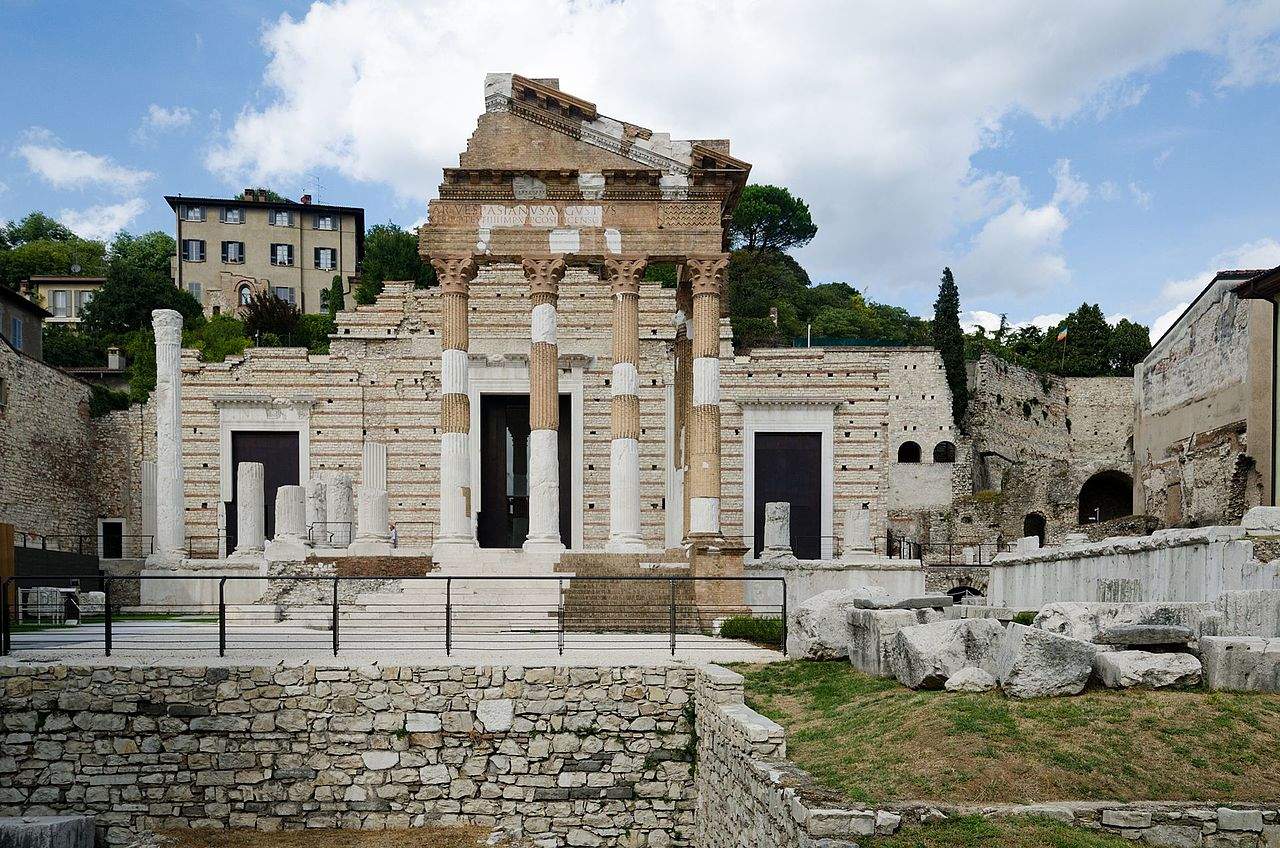
2. The Museum of Santa Giulia
The Santa Giulia Museum is “the” museum of Brescia and is located within a monastic complex dating back to the Longobard era. The thousand-year-old monastery, erected by King Desiderius, which consists of the basilica and its medieval crypt of San Salvatore, the Romanesque oratory of Santa Maria in Solario, the choir, cloisters and the 16th-century church of Santa Giulia, thus spreads over 14 thousand square meters with a museum layout that tells the story of Brescia from prehistory to the 19th century thanks to its 12 thousand pieces, of various kinds: from Coenoman Gaul artifacts to Roman marble and bronze statues, from mosaics to frescoes, from Roman and Lombard grave goods to jewelry and objects of daily and sacred use. There are many valuable pieces, such as the extremely valuable King Desiderius Cross, a wooden cross covered with metal and adorned with 212 stones, cameos and colored glass, by an unknown author: it is the largest artifact of Lombard goldsmithing in existence. The famous Lipsanotheca is also located here: it is the rare ivory casket (measuring 22 x 32 x 25 centimeters) dating from the late 4th century for the preservation of relics. The monumentally prestigious setting and the works here on permanent display are complemented by temporary exhibitions that enrich the visitor experience over time.
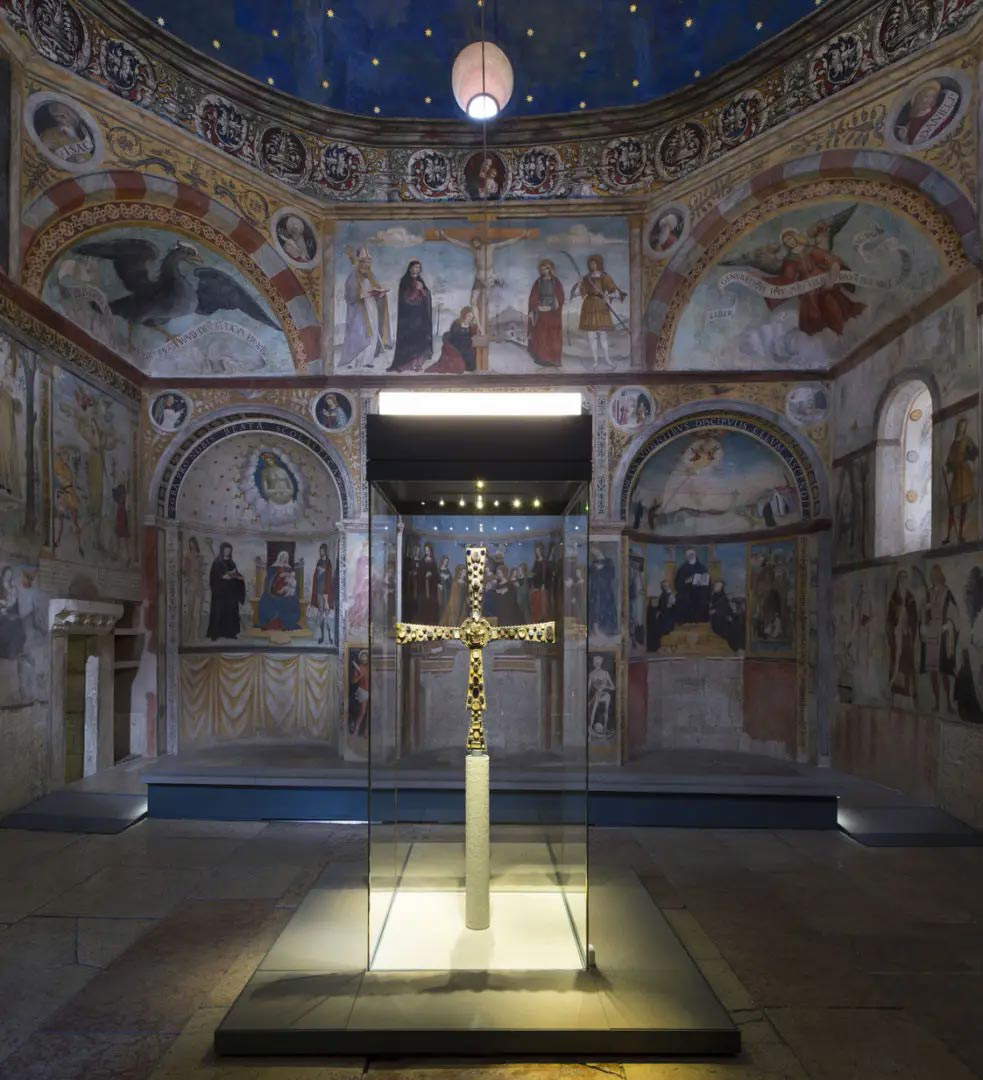
3. The Tosio Martinengo Picture Gallery
The Tosio Martinengo Picture Gallery, housed in the nineteenth-century Palazzo Martinengo da Barco, after its reopening to the public in 2018, has profoundly evolved the layout and organization of its precious collection, which from the Yrecento to the nineteenth century is the result of bequests from Brescian nobles and enriched over time with donations or even transfers from public buildings and churches with the intention of making it a “civic” picture gallery for its fellow citizens. What we can admire today is a first-rate collection that focuses on Renaissance painting with works by Raphael (the Angel and the Blessing Christ the Redeemer), Moretto (to whom is dedicated a statue in the square), Romanino and Savoldo, as well as Vincenzo Foppa, Lorenzo Lotto and other great artists of the past, and dedicating 7 out of 21 rooms to the 18th century with the protagonist of Lombard painting Giacomo Ceruti known as Pitocchetto, Pietro Bellotti, Faustino Bocchi, the Todeschini, and also works by the great Antonio Canova and Francesco Hayez but also artists such as Andrea Appiani, Berthel Thorvaldsen, Pelagio Palagi and Luigi Basiletti, protagonists of neoclassicism, paintings of the Flemish school and Dutch painting of the 16th and 17th centuries or the rich series of Japanese and Chinese paintings on paper and silk by Fè d’Ostiani... all in such a prestigious setting as the Palace, which has been completely adapted and upgraded with work finished in 2018 after 9 years of closure. The rich heritage makes it one of the major places of interest in the city.
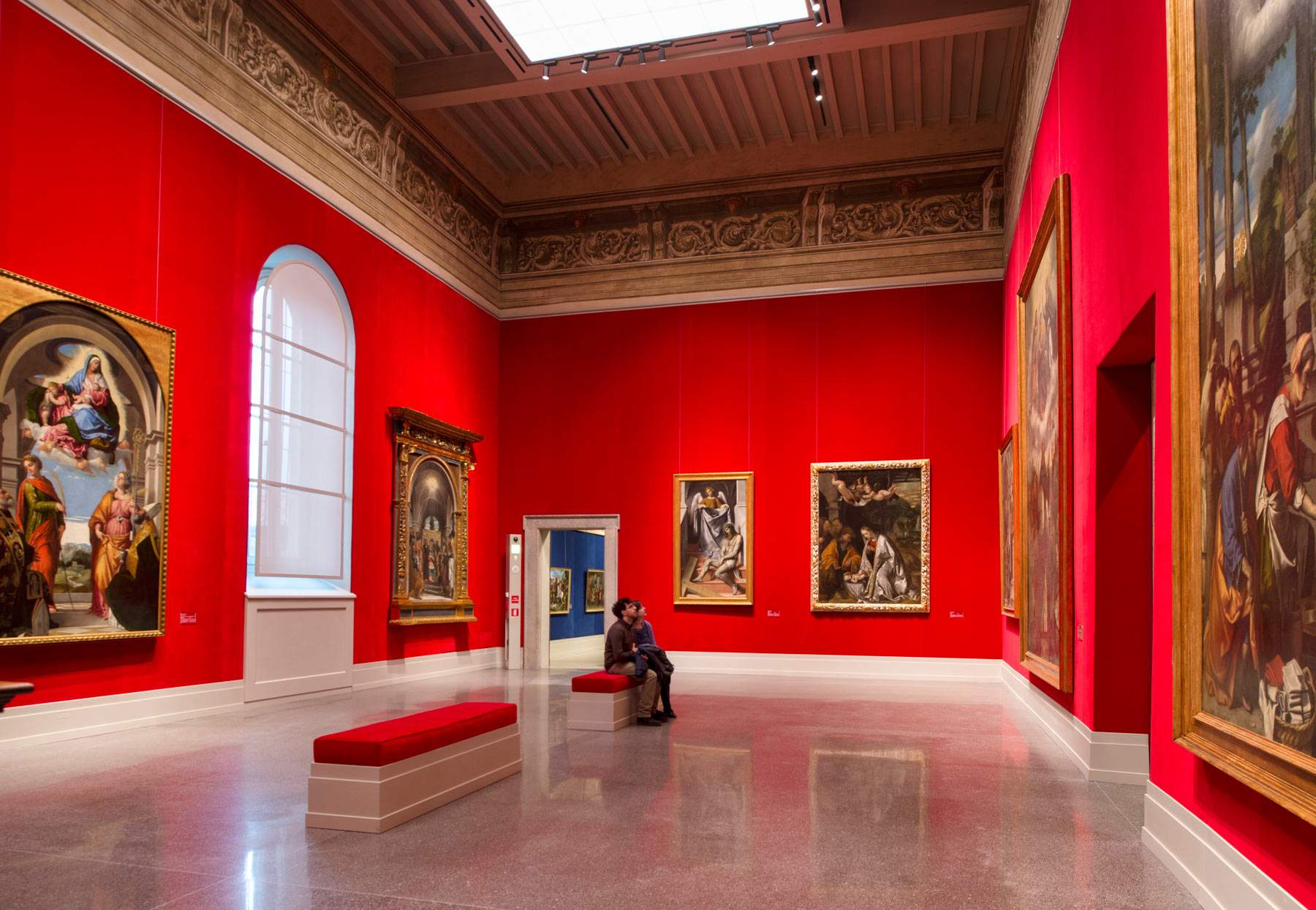
4. The Old Cathedral and the New Cathedral
The square named after the Brescian Pope Paul is home to two special features of the city: having two Cathedrals, one in Romanesque style (11th century,) and one Baroque: the latter has the third highest dome in Italy at over 80 meters, after the dome of St. Peter’s in Rome and Brunelleschi’s in Florence. We are talking about what are called “Duomo Vecchio” (the “Rotonda” for the people of Brescia) which is the winter co-cathedral of Santa Maria Assunta (11th cent.) and “Duomo Nuovo,” or the summer cathedral of Santa Maria Assunta built between 1604 and 1825 as a matter of adaptation to the times of the Counter-Reformation (and also because of the precarious conditions of the Old). They are adjacent to each other and both are splendid specimens of the architectural style of their own era and treasure chests with many works of art inside. The Rotunda is the largest and best-preserved circular building (which cannot help but bring to mind the reference of the Holy Sepulcher) in stone in Romanesque style in existence, and consists of two overlapping cylindrical bodies where the first is the ambulatory punctuated by a sequence of paired windows above which the upper drum is grafted. Originally there was also a bell tower that collapsed in the 18th century. The building is rich in valuable works of art such as the tomb of Bonino da Campione, the marble sarcophagus of Berardo Maggi, a cycle of canvases by Moretto and Romanino, and in the Chapel of the Holy Crosses the ’Treasure’ consisting of precious relics and sacred objects in gold. The New Cathedral, on a Greek-cross plan, was designed by architect Giovanbattista Lantana and the facade is a splendid Baroque in Botticino marble. As the square is long and narrow and the cathedral is placed on the long side, the building imposes itself majestically to the eye. The dome, completed by architect Rodolfo Vantini, is supported by large columns and pillars.
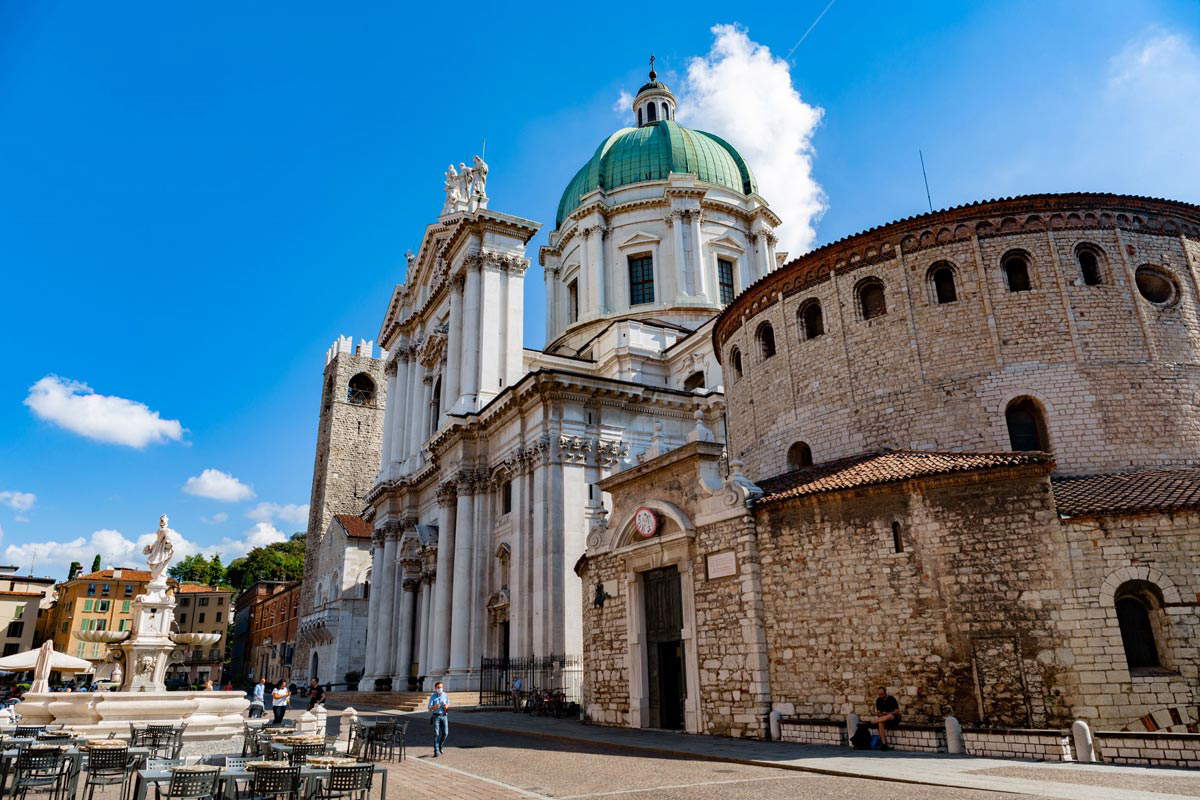
5. The church of Santi Nazaro e Celso
The church of Santi Nazaro e Celso is home to a masterpiece by Titian, the Polyptych commissioned by Altobello Averoldi that Finestre sull’Arte has discussed in detail, and is among the city’s major churches and an example of neoclassical architecture. It was begun in the 14th century and rebuilt in the 14th century to the design of architect Antonio Marchetti, embellishing itself over time with the stuccoes on the facade and the seven statues of saints that tower above the triangular tympanum supported by eight Corinthian columns.
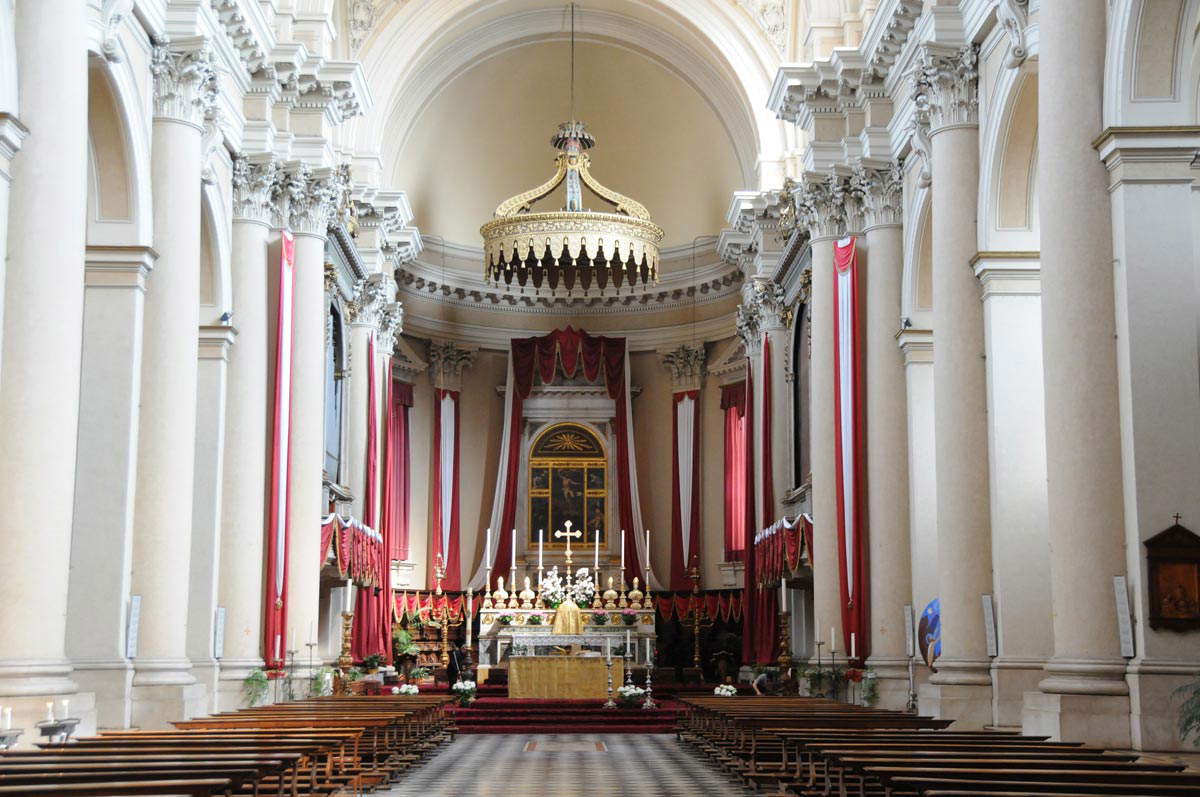
6. The church of Saints Faustino and Giovita
The 17th-century Church of Saints Faustino and Giovita is the patron church of the city. The bell tower dates back to the 12th century and is what remains of the earlier house of worship on which the present one stands, while the mighty marble facade is by Bernardo Fedreghini (and is considered his masterpiece) who chose to divide it into two architectural orders: Ionic in the upper part with a curved pediment with typical Christian symbolism (such as statues of angels, palms, crown of martyrdom) and Doric in the lower part, decorated by a series of pilasters of Tuscanic order resting on a unified pedestal and supporting an entablature, ending in a triangular pediment. The interior attributed to Giulio Todeschini has three naves, the central one of which is barrel-vaulted with pavilion heads, bordered by fourteen monolithic columns of Tuscanic order, eight of which are coupled, while the side naves are cross-vaulted. The presbytery with a lowered dome vault is decorated with 1754 frescoes by Giandomenico Tiepolo. Also of note is the black and white marble urn by Antonio Carra containing the bodies of the patron saints. Many important works and furnishings.
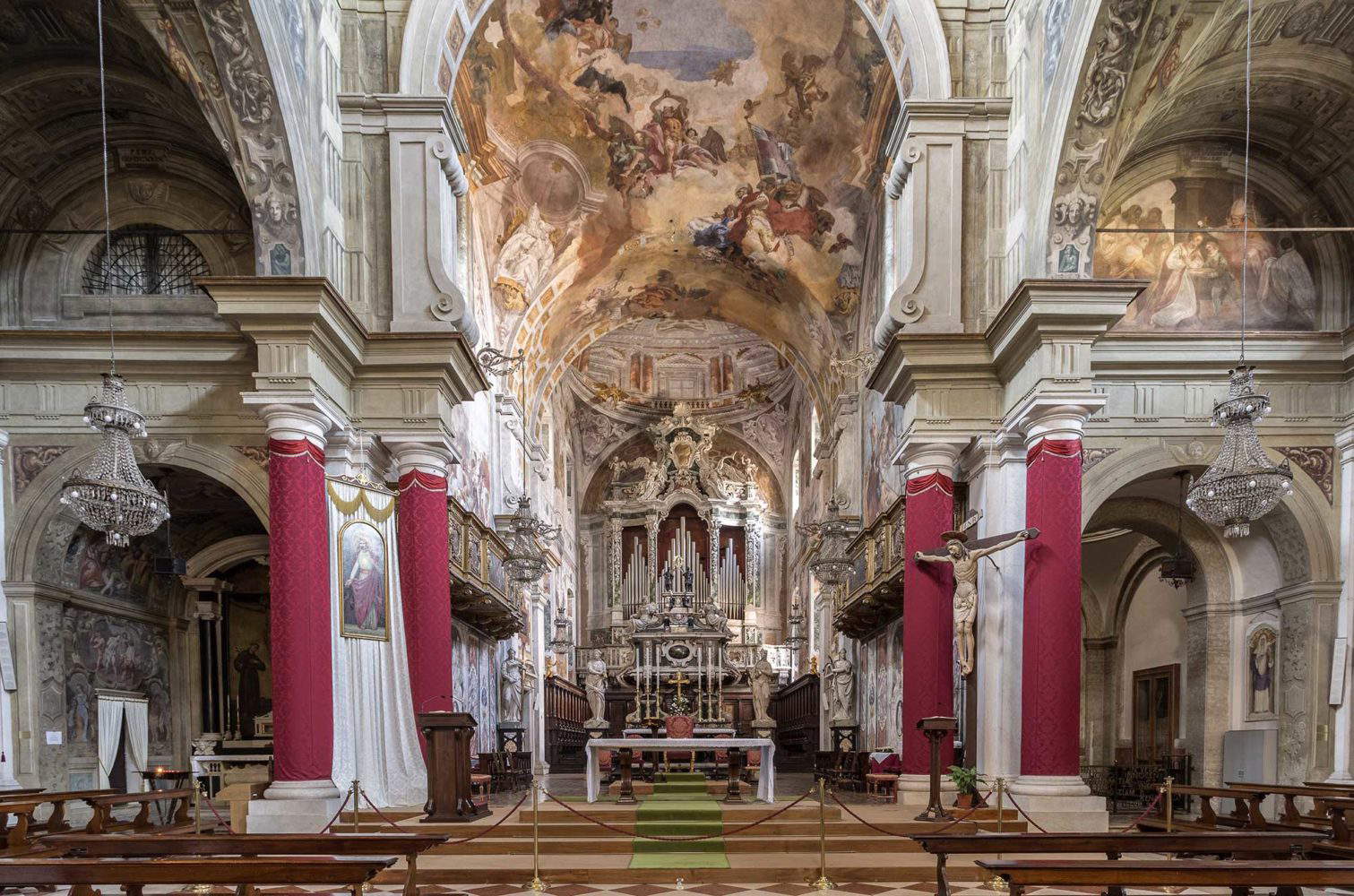
7. The Castle
In Brescia there is a castle, the Falcone d’Italia, on the hill overlooking the city, the Cidneo, complete with towers, moat and drawbridge: it is one of the largest fortified complexes in Europe. The architectural structure is visually affected by the historical epochs it has passed through: for example, the central keep, the imposing crenellated walls and the keep are reminiscent of the years of Brescia under the Milanese domination of the Visconti family, while the mighty ramparts and the monumental entrance with drawbridge are reminiscent of that of the Venetian domination. Today its interior houses two museums: the recently renovated“Lioness of Italy” Risorgimento Museum and the “Luigi Marzoli” Weapons Museum (in the 14th-century Visconti keep). The castle also houses Italy’s first public astronomical observatory.
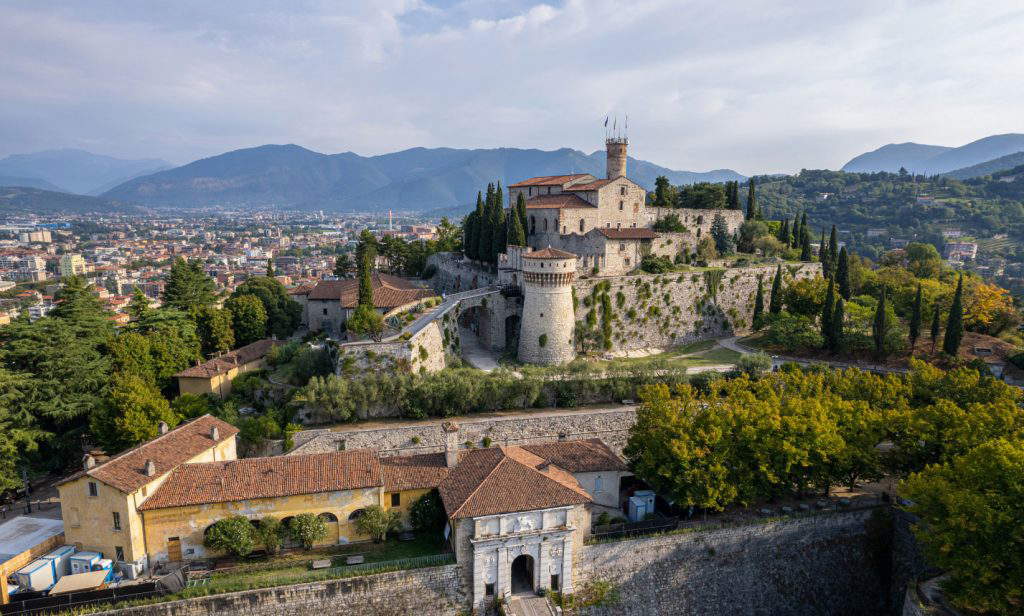
8. The Diocesan Museum
The Diocesan Museum of Brescia, founded in 1978, is located within the San Giuseppe Monastery complex, and preserves considerable quantities of sacred works (Russian icons, illuminated manuscripts with manuscripts from the 12th century, furnishings, jewelry, paintings, objects for serving mass in gold, sculptures) including a collection of liturgical vestments among the most important in Italy. Many valuable paintings including above others works by Tintoretto, Tiepolo, il Moretto, Antonio Vivarini, Pietro Avogadro, Antonio Gandino, Francesco Savanni, and Giuseppe Tortelli. The permanent collection is complemented by temporary exhibitions, making it one of the most important diocesan museums in northern Italy. Finally, worth mentioning is the presence of the book of the Rule of the Confraternity of Saints Faustino and Giovita, preserved as a relic.
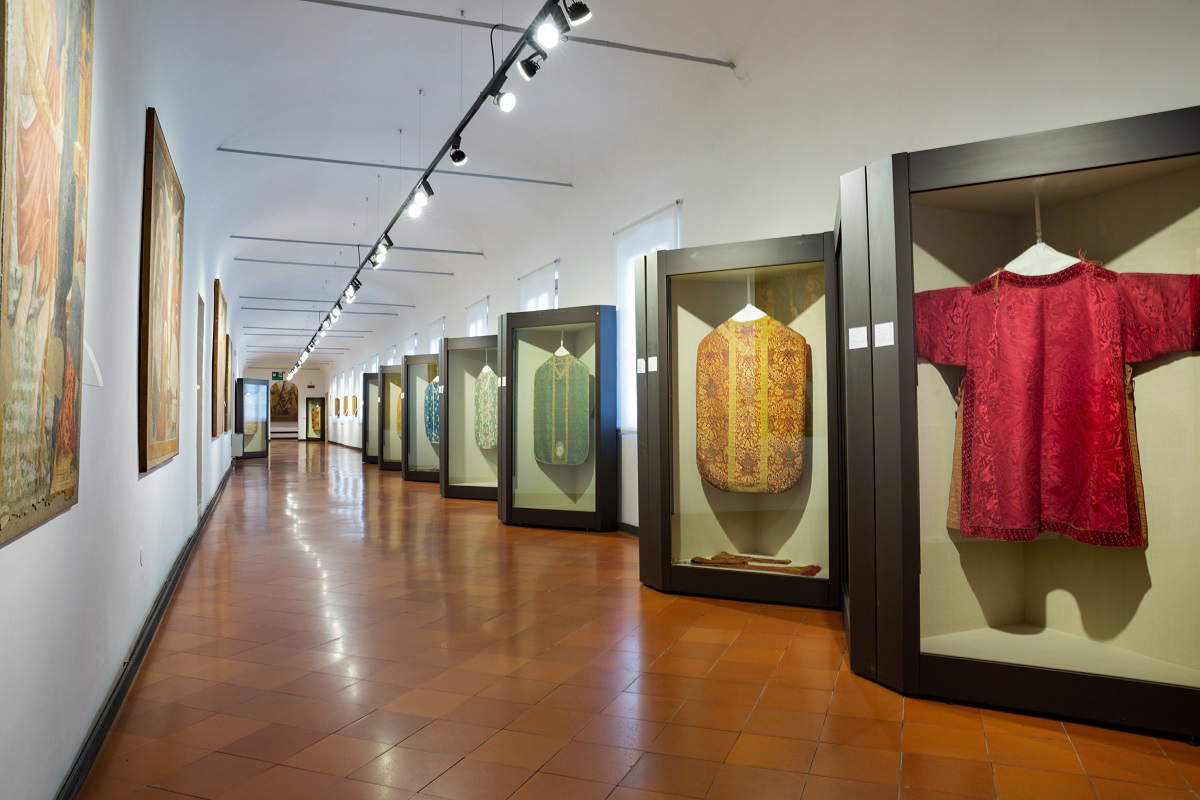
9. The Palazzo della Loggia
Standing unmistakably in the city center with its Venetian-style dome is the Palazzo della Loggia, the current seat of the Brescia City Council, whose original design is of doubtful attribution but is thought to be by Tommaso Formenton. Although there are municipal offices, the palace can be visited according to the hours made available on the website. Although intended to be a place of the city’s temporal power above the balustrade of the facade are four statues, two of which represent Saints Faustino and Giovita, Faith and Justice. In the elegant rectangular square, an entire side is occupied by the Loggia with its white Botticino marble facade and the characteristic arches of the square-plan loggia that gives shape and personality to the building. The loggia is something extraordinary because it is as if it holds up the palace in a vacuum, above what was once a river that flowed under it. Architectural work therefore of great mastery. What is striking along with the loggia is the lead roof in the shape of a ship’s hull, the work of Antonio Tagliaferri (author of the monumental staircase). On the second floor we find the great 18th-century hall by Vanvitelli, who designed it in an octagonal shape with characteristic columns in the corners. Many prestigious hands worked on the building and its ornamentation: from Titian (whose paintings were destroyed in a fire) to Vincenzo Foppa, Andrea Palladio and Galeazzo Alessi and others.
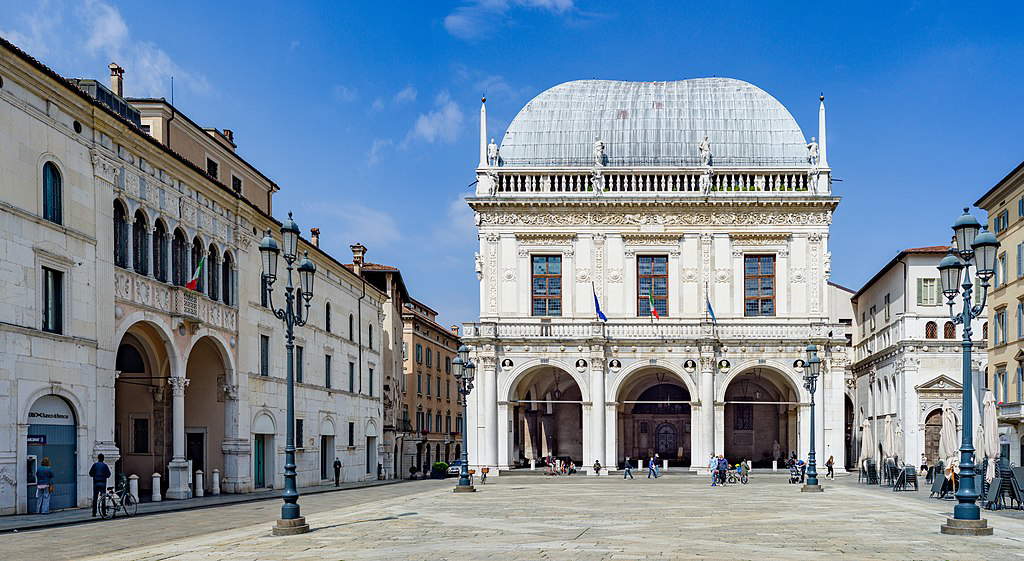
10. Victory Square
Piazza della Vittoria is the work of urban architect Marcello Piacentini, who redesigned the center of Brescia by creating the square from scratch, demolishing a neighborhood of medieval origins to inaugurate it in 1932, fully representing the architectural style of the Fascist era. Classical style, square, essential, clean, sharp, cut forms, rich in marble. With a sense of monumentality in the clean-cut essential lines of the tall buildings and squared colonnades we see the Torrione (in which the offices of Ina, Istituto Nazionale Assicurazioni, were located), i.e., the first Italian skyscraper, made of reinforced concrete, 60 meters high (13 floors of which thelast one with a restaurant, futuristic idea as well), which was equipped with the first elevator in our country, the Palazzo delle Poste north of the square, sumptuous in its simplicity, a symbol of modern state communication with the typical loggias and glass windows developed in height beloved by fascism. Of note is the Arengario, used by Mussolini on inauguration day, made of red stone from Tolmezzo, on which the history of Brescia is carved on the sides, represented in bas-reliefs by Antonio Maraini.
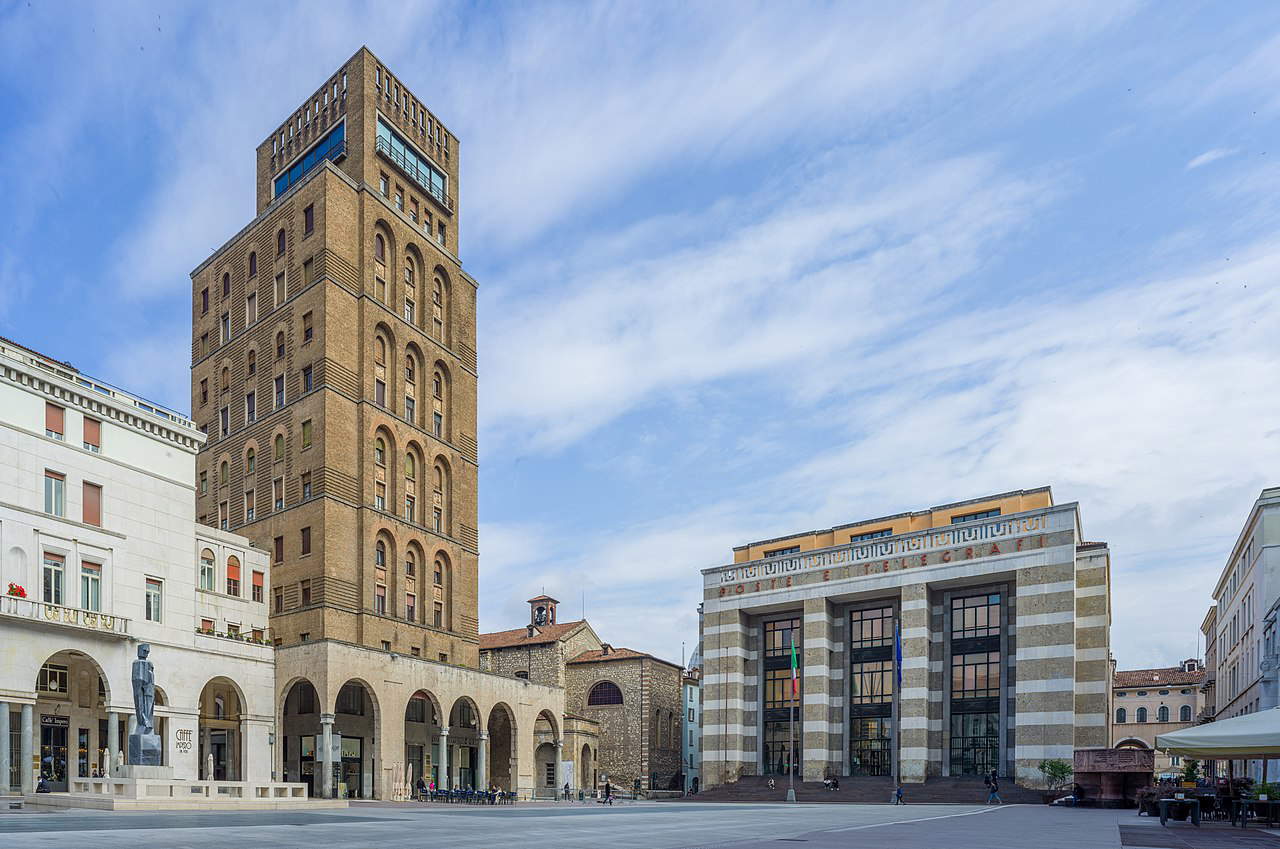
 |
| Brescia, what to see: 10 places with art |
Warning: the translation into English of the original Italian article was created using automatic tools. We undertake to review all articles, but we do not guarantee the total absence of inaccuracies in the translation due to the program. You can find the original by clicking on the ITA button. If you find any mistake,please contact us.



























